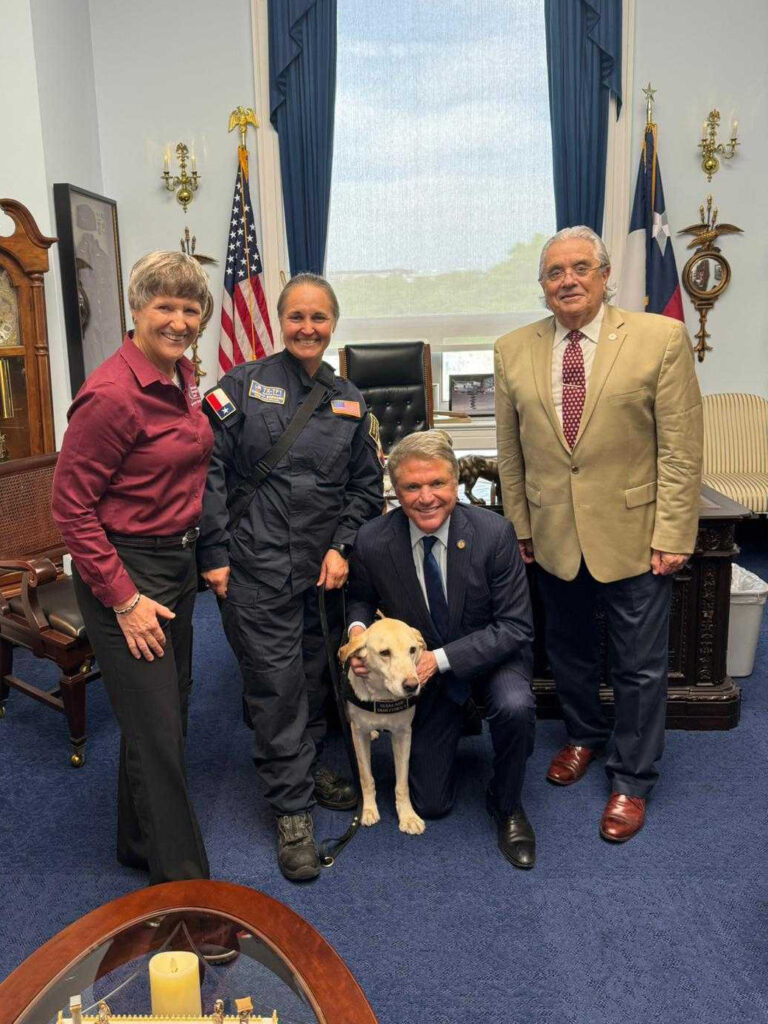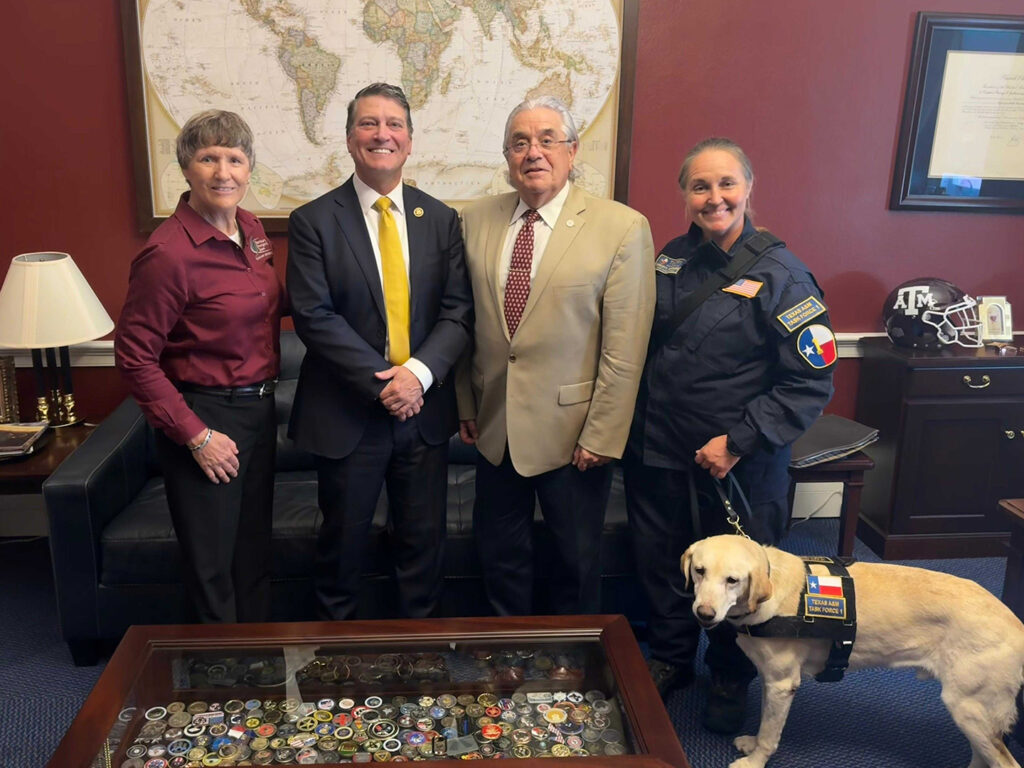How A National Network Of VETs Will Advance Disaster Preparedness And Response
Story by Texas A&M University Division of Marketing and Communications

When disaster strikes, the critical roles of paramedics, fire fighters, police and other emergency responders immediately come to mind — and perhaps even the K-9 stars who support them. It’s unlikely, though, that veterinarians are top of mind as crisis response team members, but they play an essential, behind-the-scenes role caring for K-9 units, as well as sick or injured pets rescued from a disaster.
Texas A&M University’s Veterinary Emergency Team (VET) provides an essential backbone of support to these communities, deploying with Texas A&M Task Force urban search and rescue teams in response to disasters, assisting with veterinary care for canine search team members, locating and treating livestock and companion animals impacted by disasters, and conducting surveillance of zoonotic diseases.
On Tuesday, Texas A&M Task Force 1’s K-9 Canyon and handler Christy Bormann, VET director Dr. Deb Zoran, and Texas A&M School of Veterinary Medicine & Biomedical Sciences dean Dr. John R. August took to Capitol Hill to talk with legislators about how expanding this program could impact disaster preparedness and responses efforts around the country.
“It’s always great to have Aggies in Washington and even more so when they bring their four-legged friends,” said U.S. Rep. Michael McCaul (R-Texas). “I enjoyed visiting with the delegation from Texas A&M’s veterinary school, including Christy Bormann and Canyon, who serve on one of just a few canine search and rescue teams in the FEMA Urban Search and Rescue System. Their work — along with that of the entire Texas A&M Veterinary Emergency Team — provides critical support to communities facing disasters in Texas and across the nation.”
The Hill visitors talked about the fact that with natural and humanmade disasters increasing in frequency and intensity, community leaders, including veterinarians, are increasingly called upon to prepare for and respond to these disasters, straining local resources. Texas A&M’s VET has worked with numerous local jurisdictions throughout Texas to develop animal-focused emergency plans.
“The Texas A&M Veterinary Emergency Team has been a model for animal-focused disaster response for over a decade. With federal funding, the VET can play a leadership role in the development of a nationwide emergency management program that serves both federal search and rescue teams and animal owners across the country,” August said. “The VET’s clinical education component attracts veterinary students from across North America to learn from Texas A&M’s experts; with the establishment of a federal program, there is potential for training additional veterinary students and practicing veterinarians across the country.
“We appreciate the support of the Texas A&M University System, Texas A&M University, and federal policymakers in giving the VET and VMBS the opportunity to lead this important initiative,” he said.

“We are excited about the potential to develop a nationwide veterinary network. Having served communities across Texas, in California, and in Florida for almost 15 years, the Texas A&M Veterinary Emergency Team has witnessed the devastation that disasters can have on animals and their owners,” Zoran said. “As disasters continue to increase in frequency and intensity, building a network of veterinary emergency response units in the eastern, central, and western regions of the United States will identify teams in positions to help animals in an affected area and equip them to more quickly support the working dogs that provide answers to those who’ve experienced loss during a disaster. Ultimately, this allows families to start the healing process, which is an incredibly important part of the disaster response.”
Since it was established in 2010, the Texas A&M VET has deployed to 26 disasters throughout Texas and the country, including the devastating wildfires in the Texas Panhandle earlier this year. In response to these fires, the VET field triaged nearly 700 cattle and treated 271 animals for injuries and respiratory issues resulting from smoke inhalation. The team also provided nutritional support to calves whose mothers were killed in the fires or whose udders were burned so the calves could not nurse, reducing the losses to a critical sector of the agricultural industry. As in previous disaster deployments, the VET provided veterinary support for the canines on the Texas A&M Task Force 1 and Texas Task Force 2 search and rescue teams working the over 200 burned out homes.
Additionally, in 2022, Texas A&M was the first to graduate veterinarians with a new certificate from the American Veterinary Medical Association to assist in disaster situations. Each year, 150 students in Texas A&M’s Doctor of Veterinary Medicine program elect to complete a two-week VET clinical rotation as part of their fourth-year training, during which they may deploy with the team. This supports both the need for veterinarians trained in communities and the development of a network to meet the needs of disaster response.
The Homeland Security subcommittee of the House Appropriations Committee will soon consider a request for funding for fiscal year 2025 to support a national network of VETs throughout the country. These teams will assist state and local governments and non-profits with recovery efforts as they relate to veterinary care. Through federal funding, Texas A&M can continue to support the Federal Emergency Management Agency in its response and recovery efforts.
###
For more information about the Texas A&M College of Veterinary Medicine & Biomedical Sciences, please visit our website at vetmed.tamu.edu or join us on Facebook, Instagram, and Twitter.
Contact Information: Jennifer Gauntt, Director of VMBS Communications, Texas A&M College of Veterinary Medicine & Biomedical Sciences, jgauntt@cvm.tamu.edu, 979-862-4216


